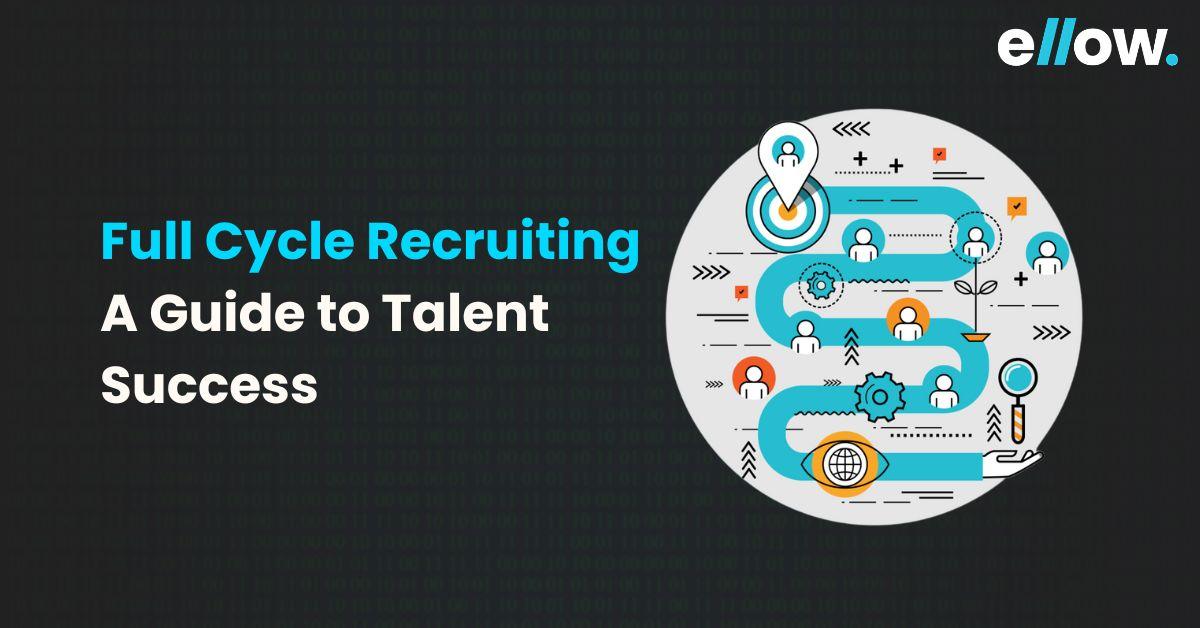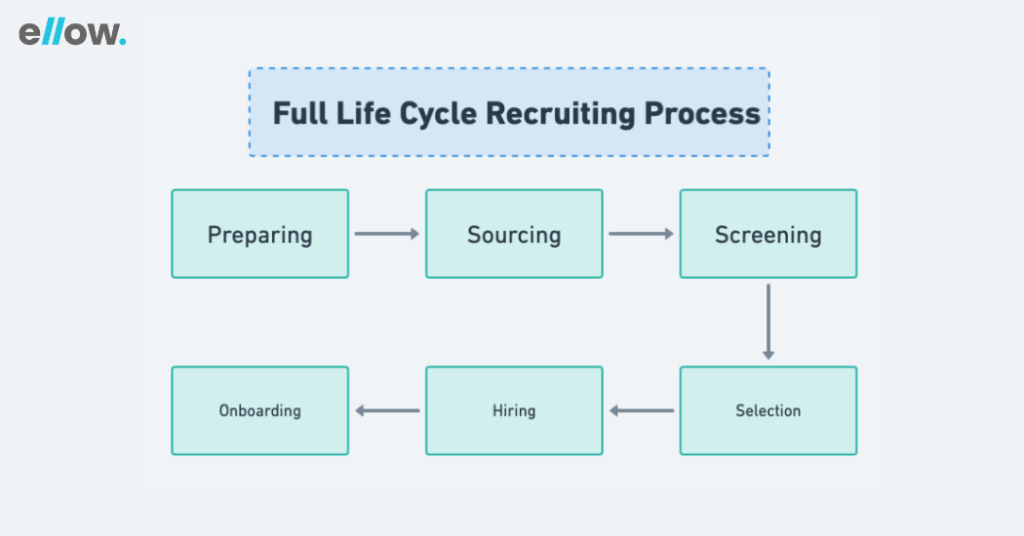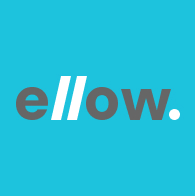Let’s build the future together.
Great ideas need great people. Partner with us to bring your vision to life, or take the first step in your career by joining our team of innovators.

Hiring the right talent involves more than just waiting for job applications. The traditional approach where companies engage with candidates only after they apply, has its limitations. Imagine if a potential employee’s first interaction with your company happens before they even see the job description. First impressions are crucial, particularly in a competitive job market. To address this, many organizations are adopting a proactive strategy known as full cycle recruiting.
This approach encompasses the entire hiring process, starting from identifying the need for a role to onboarding the selected candidate. In this article, we will delve into the nuances of full cycle recruiting, exploring its significance, benefits, and impact on employee retention. Discover why this approach goes beyond the conventional methods and how it can be a game-changer in building a workforce that grows with your organization.
The primary challenge in the recruitment lifecycle for global staffing firms persisted, with a majority of respondents identifying sourcing as the main obstacle. The survey introduced two new challenges following the conclusion of COVID-19 restrictions in numerous workplaces: back office administration and onboarding.
Full-cycle recruiting, also known as end-to-end or full-life cycle recruiting, is a comprehensive hiring approach involving a recruiter overseeing every step of the hiring process. This means they handle everything from preparing for the hiring process to onboarding the selected candidate.
Within an organization, the responsibility for conducting the stages of the full life recruitment cycle falls upon various key players, with the HR department serving as the organizer of this event. HR department takes charge of tasks like resume screening, ensuring that potential candidates align with the organization’s needs. Additionally, the HR team is responsible for coordinating the interview process, scheduling meetings, and managing the logistics.
The hiring managers, play a crucial role in decision-making. These individuals provide valuable insights into job requirements, shaping the specifications for the ideal candidate. Their authority extends to participating in interviews, where they evaluate candidates based on their expertise and potential contribution to the team.
Interviewers, ranging from seasoned managers to HR professionals and team members, assess candidates from different angles. They delve into qualifications, cultural fit, and overall compatibility with the organization.
But wait, there’s more. Enter the assessment specialists, the unsung heroes of objectivity. Armed with tests and assessments, they bring a scientific touch to the evaluation process. Their role is to ensure that candidates are rigorously and fairly evaluated, providing an additional layer of insight.
In this collaborative symphony, stakeholders work together seamlessly to identify and select the very best candidates. The result? A thorough and effective recruitment process ensures the organization welcomes individuals who not only meet the job requirements but also contribute to the overall success and culture of the company.

The “Preparing” stage in the full life cycle recruiting process serves as the foundation for a successful recruitment drive. It begins with the approval of an internal job requisition, at which point the recruiter initiates a collaborative engagement with the hiring manager.
The primary objective is to obtain vital information and insights about the vacant position, setting the stage for an efficient and targeted recruitment effort.
Hierarchy:
Benefits:
Tips:
After job posting preparation, sourcing is the stage where the full-cycle recruiter actively seeks and identifies potential candidates for the open position. This involves utilizing specialized strategies to attract individuals with the skills and qualifications required for the role.
Hierarchy:
Benefits:
Tips:
The screening stage is a critical step in the full life cycle recruiting process, where the initial evaluation of candidates takes place through various methodologies. This phase is designed to sift through a pool of applicants, ensuring that those progressing further align with the outlined job requirements and organizational expectations.
Hierarchy:
The most common screening technique involves assessing candidates’ resumes to determine if they meet the specified criteria in the job description. Efficiently filters applicants based on their qualifications and experience.
Following resume screening, a phone screening is often conducted to align expectations between the candidate and the employer. It provides a more interactive platform to discuss aspects like compensation expectations, commitment level, and potential deal-breakers.
A powerful screening method utilizing assessments such as cognitive testing, job samples, and personality testing to predict the quality of a new hire. Helps avoid potential mismatches and provides a more in-depth understanding of candidates’ capabilities.
Additional Insights:
Tips:
During the selection stage of the full life cycle recruiting process, the focus shifts to the orchestration of interviews, assignment distribution, and maintaining a robust relationship with the hiring manager. This phase is pivotal in not only evaluating candidates but also ensuring a structured and unbiased approach to the hiring decision.
Hierarchy:
Assignments, such as case studies or practical tasks, are distributed to candidates to assess their skills and problem-solving abilities.
This step allows recruiters to gauge practical competencies relevant to the job role, providing valuable insights beyond traditional interviews. Ensures a comprehensive evaluation, especially for roles requiring specific skills or project-based tasks.
This involves meticulous planning, scheduling, and execution of candidate interviews, ensuring a fair and consistent process.
Recruiters need to plan interviews, structure the questioning, and ensure a standardized process to fairly assess each candidate. Structured interviews contribute to unbiased candidate evaluations, fostering a more inclusive hiring process.
After the interview process, gather feedback from both candidates and interviewers to assess strengths, weaknesses, and cultural fit. The recruiter acts as a conduit between hiring managers and candidates, collating feedback and facilitating open communication.
Enables data-driven decision-making, highlights areas for improvement, and fosters a collaborative approach to candidate evaluation.
Benefits:
Tips:
The hiring stage is the culmination of the recruitment process, where the full-cycle recruiter, in collaboration with the hiring manager, finalizes the selection of the best-suited candidate. This phase involves conducting reference checks, background checks, and making the ultimate hiring decision.
Hierarchy:
Reference checks are a crucial step to verify the information provided by the candidate and gain insights from previous employers or professional contacts. The recruiter contacts individuals listed as references to confirm the candidate’s qualifications, work ethic, and overall suitability for the position. Provides a comprehensive understanding of the candidate’s capabilities and work history, helping to validate the recruiter’s perception and assessments from earlier stages.
Background checks involve a thorough examination of a candidate’s criminal history, educational qualifications, and, in some cases, credit history. The extent of background checks may vary based on the role and geographical location. The recruiter, often with the assistance of specialized tools like Checkmate, ensures that the candidate’s background aligns with the requirements of the position and organizational standards.
Adds an extra layer of assurance regarding the candidate’s integrity and suitability for the role, particularly crucial in positions with legal or security implications.
The final decision-making phase involves synthesizing information gathered throughout the recruitment process, applying a data-driven approach to select the best candidate, and extending a job offer. The recruiter, along with the hiring manager, evaluates candidates based on predetermined criteria established during earlier stages, using data and insights gathered from interviews, assessments, and reference checks.
A data-driven decision-making process ensures objectivity and consistency, enhancing the likelihood of hiring a candidate who aligns with the organization’s values, culture, and job requirements.
Tips:
Following the hiring decision, the onboarding stage marks the transition from recruitment to the employee’s integration into the organization. Pre-boarding, a crucial preliminary phase, focuses on maintaining the engagement and enthusiasm of new hires during the period between contract signing and the official start date.
Hierarchy:
Benefits:
Tips:
Implementing a full-cycle recruiting strategy involves a holistic approach to the entire hiring process. Here’s how to do it:
Communication is key. Clearly define the roles and responsibilities of each team member involved in the hiring process. Understanding a candidate’s movement through different stages ensures a cohesive experience and builds confidence in the process.
Initiate contact early and maintain engagement until onboarding completion. Establish clear benchmarks for each stage to guide the process effectively. Defining these stages helps identify key drivers and stakeholders at each step of the recruitment journey.
Implement two follow-up systems: one for tracking candidates through the process to avoid confusion, and another for maintaining connections with qualified candidates. Building and nurturing relationships, even with those who may not be an immediate fit, streamlines future sourcing efforts as the company expands.
Recognize that every candidate, regardless of qualifications, may need time to acclimate to their role. Developing a process for guiding and supporting candidates during onboarding. Providing coaching alongside onboarding enhances candidate success and positively influences long-term retention.
Select metrics that align with your organization’s recruitment goals. Consider factors like accepted offers, time in the process, and long-term employee retention. Tailor your HR metrics to reflect what success means for your company’s unique recruitment objectives.
Before committing to a full-cycle recruitment process, consider these questions:
Evaluate whether a full-cycle approach aligns with your company’s resources, goals, and timelines. It may not suit every organization or role, so thoughtful consideration is essential.
Selecting the right combination of full-cycle recruiting technologies is crucial for a company’s hiring success. This involves integrating sourcing tools, applicant tracking systems (ATS), talent branding platforms, and human resource information systems (HRIS) tailored to the organization’s specific requirements.
Recruiters can leverage a variety of sourcing tools available in the market based on their industry and the specific roles they are recruiting for. Established platforms like LinkedIn Recruiter, Dice, and CareerBuilder are widely used, while newer platforms like Hired, Teamable, and SeekOut have gained popularity among recruiters seeking innovative solutions.
Applicant tracking systems (ATS) are essential for recruiters to manage candidates throughout the recruitment and hiring process. These systems help recruiters monitor candidates’ progress and assess key performance indicators such as time-to-hire and offer acceptance rates. Popular ATS options include Greenhouse, Lever, and Workable.
Creating a positive employer brand is crucial for attracting top talent. Talent branding platforms play a key role in increasing brand awareness. Online platforms like Built In and LinkedIn offer services that enhance a company’s talent branding, making it more appealing to potential candidates and facilitating effective recruitment efforts.
Human Resource Information Systems (HRIS) are comprehensive tools that store employee data and oversee various HR processes, such as time and attendance tracking. Some HRIS may also offer additional features like performance management and integrated ATS functionality. Well-known HRIS providers like ADP and Workday offer bundled services to streamline HR operations.
When considering the implementation of a full-cycle recruiting process for software engineers, it is important to align your decision with your company’s hiring goals. If you choose to adopt this comprehensive recruitment approach, ellow.io can be your valuable partner.
Recognizing the importance of swiftly hiring the right software engineers for tech companies, our services specialize in efficiently identifying, hiring, and managing thoroughly vetted. With ellow.io, you can expect to receive shortlists within three days and complete the hiring process in as little as two weeks.
Our commitment extends beyond recruitment we can handle onboarding, payroll, taxes, and other administrative matters, allowing you to concentrate on integrating your new team member seamlessly into your organization.
If you require a full-cycle recruiter to source and hire developers for your team, don’t hesitate to contact ellow.io today. Let us contribute to the scaling of your engineering team with our expertise and comprehensive services.
The Ultimate Guide to Hiring Remote Tech Talent
AI Trends in Recruitment: Revolutionizing the Hiring Landscape
Full-cycle recruiting is a comprehensive process that involves all stages of hiring, from sourcing candidates to onboarding. It is crucial for success as it ensures a thorough and efficient approach to acquiring the right talent for your organization.
ellow.io specializes in efficiently identifying, hiring, and managing rigorously vetted software developers. Our services guarantee shortlists within three days and a complete hiring process in as little as two weeks, streamlining the talent acquisition journey.
ellow.io stands out by offering software developers, to address the specific needs of tech companies. Our commitment extends beyond recruitment, as we also manage onboarding, payroll, taxes, and other administrative tasks for a seamless integration process.
With ellow.io, you can expect to receive shortlists within three days and complete the hiring process in as soon as two weeks. Our swift and efficient approach ensures a quick turnaround to meet your urgent talent acquisition requirements.
In addition to the standard full-cycle recruiting services, ellow.io goes the extra mile by handling onboarding, payroll, taxes, and other administrative tasks. This allows you to focus on integrating your new team members seamlessly into your organization, enhancing the overall efficiency of the talent acquisition process.

How Top SaaS Companies Build Agile Teams with Remote Developers

How to Hire Vetted Remote Developers in a Hyper-Competitive Market

Top 5 Countries to Hire Remote Developers (and Why)
Please feel free to share your thoughts and we can discuss it over a cup of tea.
Get a quote
How Top SaaS Companies Build Agile Teams with Remote Developers

Six Things to Consider When Hiring Remote Talent

ellow.io enters remote hires market with AI-based screening process